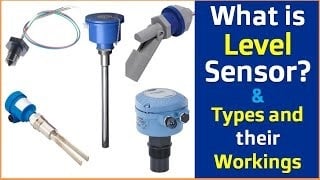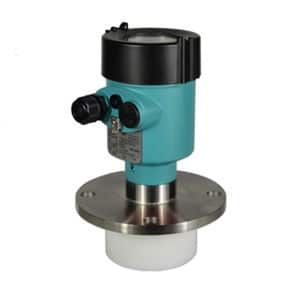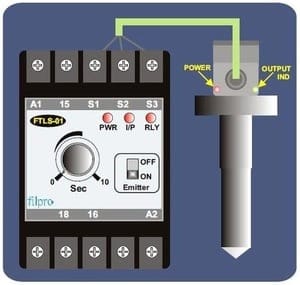There are different types of industrial level sensors. The level sensors are used to measure, monitor, and control the level of the storage vessels. It is used to monitor the level of vessels to avoid overflow of the material from the storage bin.
The various level sensors functions on the different principles. In this post, we will discuss the different types of industrial-level sensors and their applications.
There are two types of level sensors.
- Point level sensors and
- Continuous sensing sensors.
Point Level sensors
Point level sensors can detect the presence of liquid media in the storage vessel. Generally, these types of sensors are most suitable for the detection of high and low levels. The drive before the storage vessel starts and stops according to the high & low voltage level of the storage silo or hopper. Thus, by using point-level sensors, it is possible to avoid the spillage of material from the storage vessel.

Types of Point Level sensors
Conductivity & Resistance Level Sensors
These types of industrial level sensors function on the flow of electrical current between the two probes. When current flows between the probes, the contact actuate. This contact is used for starting/stopping the material conveying equipment to the silo or hopper.
The probes have a pair of electrodes. When the liquid covers the probes, the current starts flowing through the electrodes.
Capacitance Type Industrial Level Sensors
The capacitance type level sensors are most suitable for detecting the level of the storage vessel when the material is not conductive in nature. The material has dielectric properties.
The measuring principle of the capacitance sensor is the measurement of the change in the capacitance with the presence of the material between the capacitance probes.
Basically, it consists of two plates and it measures the change in capacitance between them as the level flowing through plates changes.

It can work with any dielectric constant of a medium. However, it needs calibration when installed for a particular dielectric medium.
We can use capacitance sensors for liquid storage tanks, water treatment facilities, cement silos, and hoppers.
Optical Level Sensors
Optical sensors convert light rays into electrical signals.
It has LED as an optical source & photodiode or phototransistor as a detector. The light incidents on the cone-shaped prism that functions as a light reflector. The amount of light reflected back to the detector shows the level of the material.
When there is no liquid between the light source and detector, the maximum amount of light is reflected back to the detector.

When there is a liquid between the light source and detector, the amount of reflected light reduces and it shows the presence of liquid between the source and reflector.
The factors like a small reflective tank, mirrored tanks, bubbles, coating fluids can cause errors in readings.
These sensors do not have moving parts. These are suitable for level measurement under high temperature and pressure.
Float Switch
In the float type switch, the float of the sensor floats on the medium. The float goes up with the level of medium goes up. Thus, the electrical switch mounted at the rear side of the float actuates and the pumping system stops.
Types of Continuous Level sensors
There are two types of continuous level sensors.
Microwave & Radar Level Sensors
The system functions on the reflection of an electromagnetic pulse. The pulses are directed on a sensor rod/ cable, then the pulses are reflected by filling material. And, the echo time of the pulse is proportional to the distance from the surface of the medium. The sensor measures the echo time to measure the level.
The measurement error is very less because the measurement is independent of pressure, temperature, vapor, dust, foam, viscosity, conductivity, and pH value.
The continuous level measurement for liquids and bulk solids measures the propagation of microwaves according to time domain reflectometry (TDR). Thus, these types of level measurement instruments do not require physical contact with the material.
The total time taken to reach the detector after reflecting from the surface determines the level of the media.
The time taken to reach the detector after reflecting from the surface determines the level of the media.
Ultrasonic Level Sensors
The ultrasonic level sensors measure the distance by using ultrasonic waves. Basically, Ultrasonic waves are sound waves. The sensor head emits an ultrasonic wave, and these waves incident on the target. From the target, the waves reflected back. Ultrasonic level sensors measure the distance to the target by measuring the time between the emission and reception.
The time taken to reach the detector after reflecting from the target determines the level of the media.
Read More: